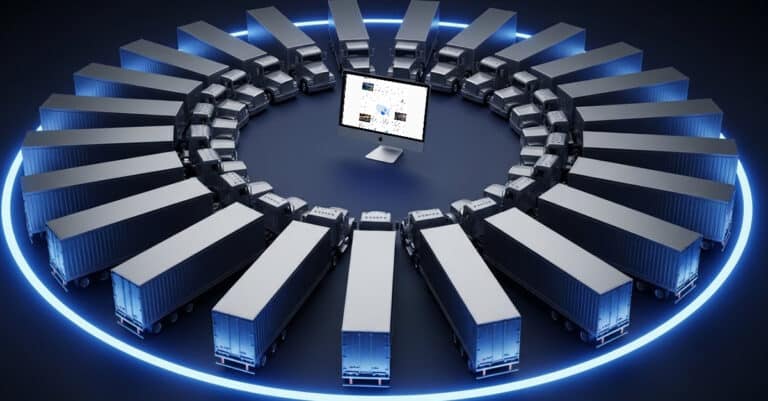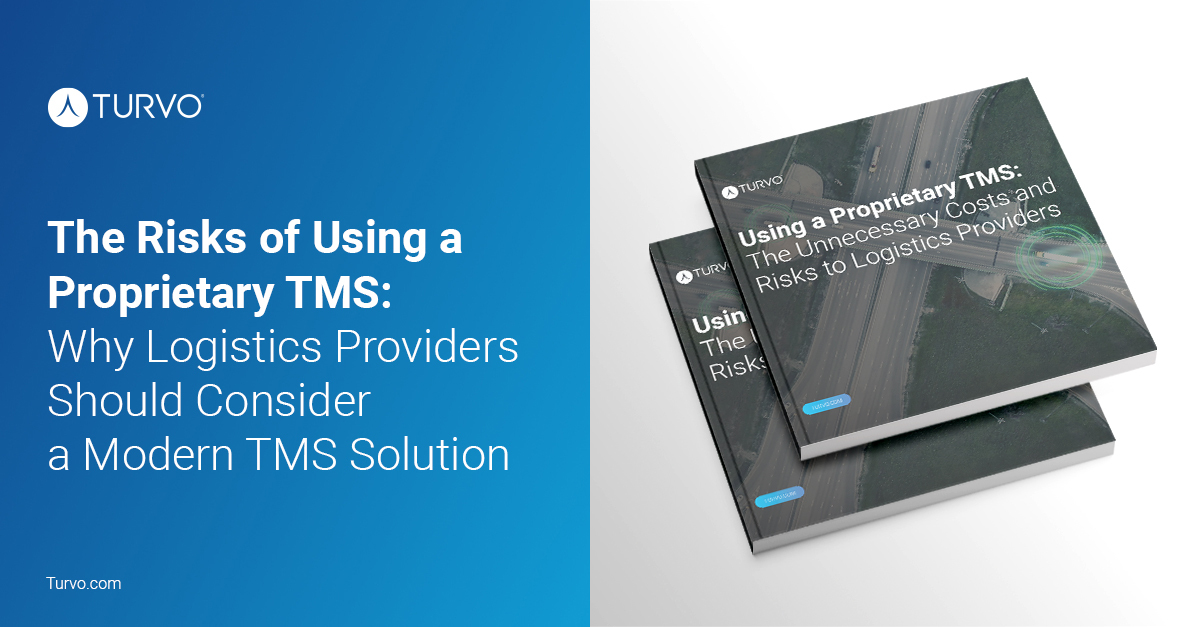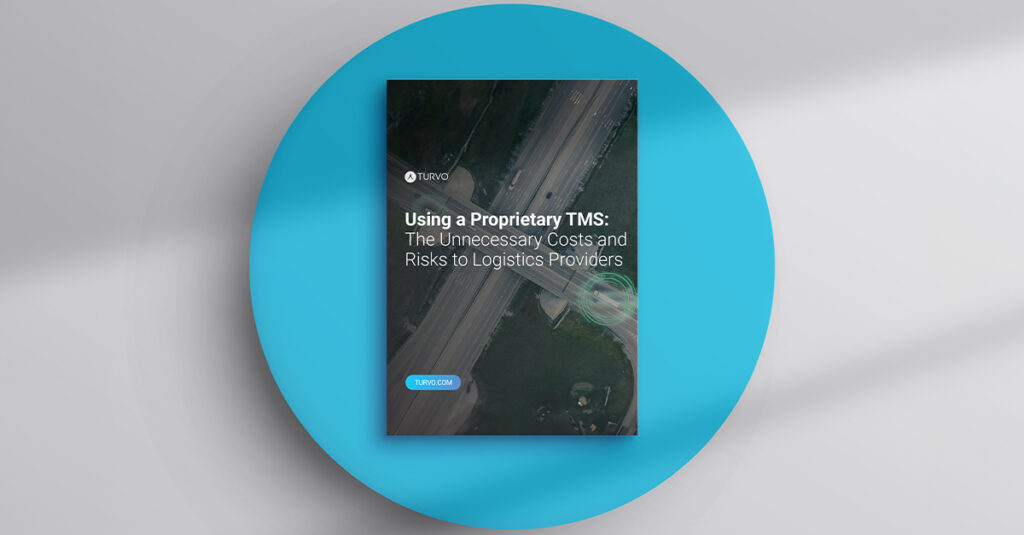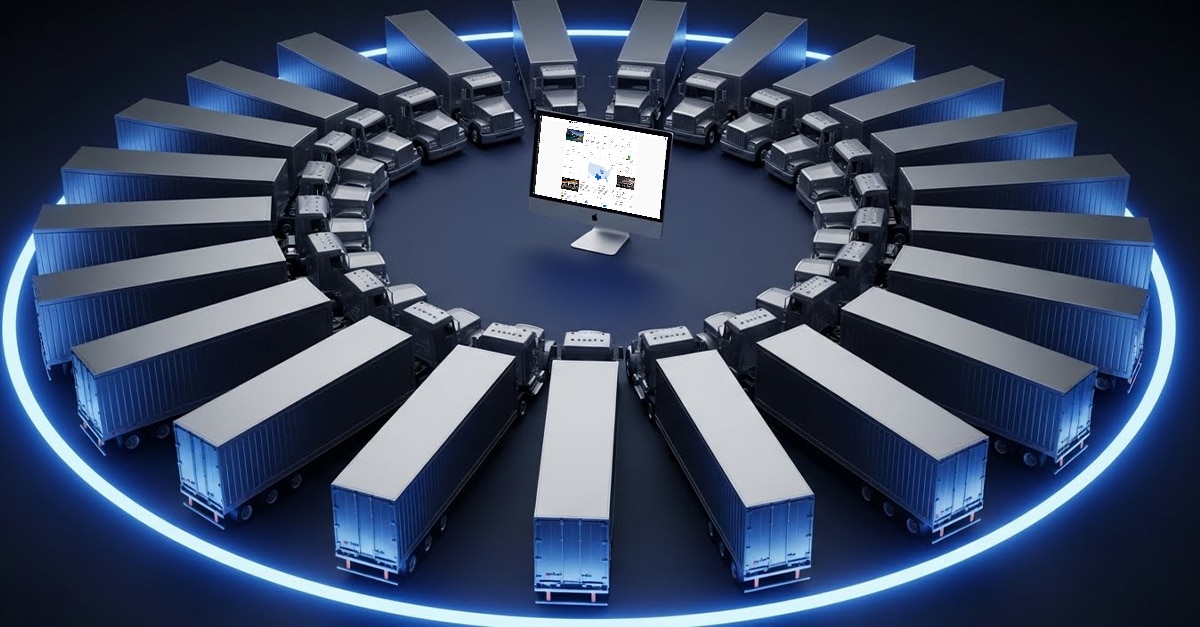In the rapidly evolving world of logistics and supply chain management, the tools and technologies we rely on are more critical than ever. As companies strive to stay competitive, the systems they use to manage transportation and logistics must keep pace with the demands of a global marketplace. This brings us to a crucial decision that many logistics providers face: whether to continue using a proprietary Transportation Management System (TMS) or to upgrade to a modern TMS solution.
A recent playbook from Turvo sheds light on the unnecessary costs and risks associated with using outdated proprietary TMS systems. It presents a compelling case for why logistics providers should consider transitioning to a modern TMS. In this blog post, we’ll discuss the highlights from the playbook and explore why a modern TMS is a vital investment for the future of logistics.
The Evolution of TMS: From Manual Systems to Modern Solutions
Transportation Management Systems have come a long way from their early days of manual procedures, paper-based documentation, and basic spreadsheets. As the playbook highlights, these early systems were not designed with user-friendliness in mind, often leading to inefficiencies and human errors. Over time, TMS solutions have evolved to become more sophisticated, integrating automation, real-time data, and advanced analytics to improve the efficiency and effectiveness of logistics operations.
The playbook underscores that modern TMS systems are not just a trend but a necessity in today’s competitive landscape. As businesses expand globally, the need for a robust, scalable, and efficient transport management system has become increasingly important. A modern TMS acts as the orchestrator of logistics operations, harmonizing various elements to create a seamless flow that drives value and efficiency.
The Build vs. Buy Debate: Why Building a TMS is No Longer Viable
One of the key discussions in the playbook is the debate between building a proprietary TMS and purchasing an off-the-shelf solution. In the past, some logistics providers opted to build their own TMS, believing it would give them a competitive edge. However, as the playbook points out, this approach is becoming increasingly unsustainable.
Building and maintaining a proprietary TMS is not only costly but also time-consuming. The playbook cites industry experts who argue that unless a company can deliver twice the functionality of a commercial solution from day one, the ongoing challenges of maintaining and upgrading a proprietary TMS will outweigh any potential benefits. Moreover, in an era where technology is advancing at an unprecedented pace, proprietary systems can quickly become outdated, leaving companies struggling to keep up.
The playbook emphasizes that modern TMS solutions are designed to be flexible and adaptable, offering logistics providers the tools they need to differentiate their services without the burden of maintaining a custom-built system. By choosing a modern TMS, companies can leverage the latest technology to stay competitive while reducing costs and risks.
Download the Proprietary TMS Playbook 👉
Discover how to mitigate unnecessary costs and risks associated with outdated proprietary TMS systems, and learn techniques for enhancing operational efficiency and improving customer satisfaction.
Cybersecurity: A Growing Concern for Proprietary TMS
Cybersecurity is another critical issue highlighted in the playbook. As logistics operations become more digitized, the risk of cyberattacks has increased significantly. Proprietary TMS solutions, particularly those that are outdated, are often more vulnerable to cyber threats.
For companies using a proprietary TMS, the responsibility for cybersecurity falls entirely on their shoulders. This means investing in expensive security measures, constantly updating systems, and responding to emerging threats—all of which can strain resources and divert attention from core business activities.
In contrast, a modern TMS is built with cybersecurity in mind. These systems are regularly updated by the vendor to protect against the latest threats, and they often include advanced security features as standard. By switching to a modern TMS, logistics providers can reduce their cybersecurity risks and focus on what they do best—moving goods efficiently and effectively.
Enhancing User Experience with a Modern TMS
User experience is a critical factor in the success of any technology solution, and this is especially true for TMS systems. The playbook highlights the importance of a user-friendly interface, noting that a clunky, difficult-to-use system can slow down operations and lead to frustration among employees.
Modern TMS solutions are designed with the user in mind. They offer intuitive interfaces, easy navigation, and powerful features that make it easier for logistics professionals to manage their operations. The playbook cites customer feedback on Turvo’s TMS, where users praised its ease of use and quick learning curve. This kind of positive user experience is essential for driving adoption and ensuring that employees can work efficiently with the system.
Furthermore, a modern TMS can be seamlessly integrated with existing systems, providing a unified platform for managing all aspects of transportation and logistics. This not only improves efficiency but also enhances the overall user experience by reducing the need to switch between different systems.
The Competitive Edge: Why a Modern TMS is a Must-Have
In today’s fast-paced and competitive logistics environment, having the right technology is crucial. A modern TMS provides logistics providers with the tools they need to optimize operations, reduce costs, and improve customer satisfaction. The playbook highlights several ways in which a modern TMS can give companies a competitive edge:
– Real-Time Visibility: A modern TMS offers real-time visibility into the supply chain, allowing for quicker decision-making and better responsiveness to disruptions.
– Scalability: As businesses grow, a modern TMS can scale with them, accommodating more complex logistics operations without sacrificing performance.
– Integration: Modern TMS solutions can integrate with other systems, such as warehouse management and customer relationship management, to provide a comprehensive view of the entire supply chain.
The Future of Logistics Lies in a Modern TMS
The playbook from Turvo provides a detailed analysis of the risks and costs associated with using a proprietary TMS. It makes a strong case for why logistics providers should consider upgrading to a modern TMS solution. With the ability to enhance user experience, improve cybersecurity, and provide a competitive edge, a modern TMS is not just a nice-to-have—it’s a must-have for any company looking to thrive in the logistics industry.
Want to see what a modern TMS can do for you? Schedule a demo today.









